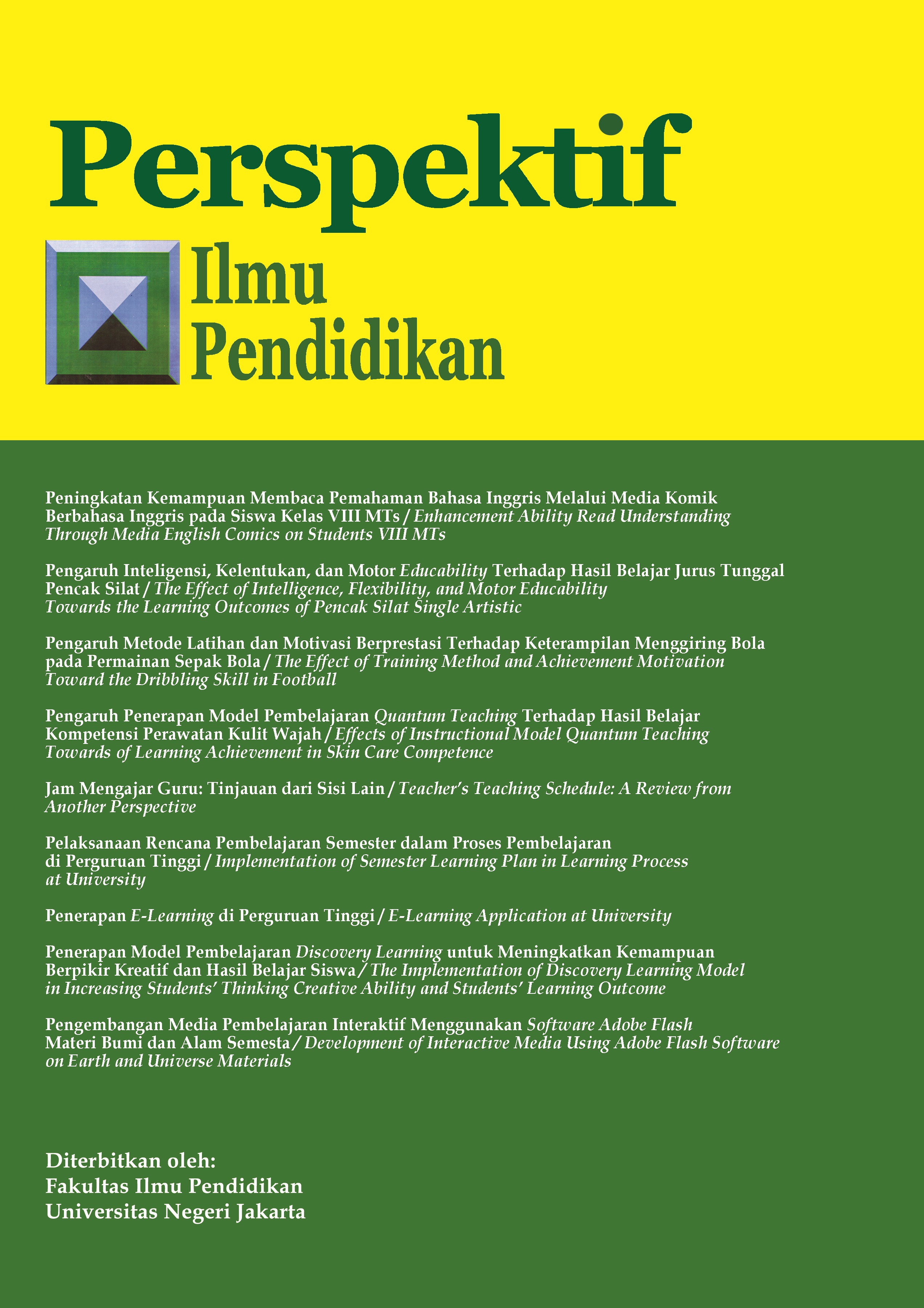PENERAPAN E-LEARNING DI PERGURUAN TINGGI
DOI:
https://doi.org/10.21009/PIP.321.7Keywords:
e-learning, blended learning, analysis, design, development, evaluation, implementationAbstract
This research was aimed to describe the application of e-learning at the Department of Educational Technology, Faculty of Education Science, Jakarta State University. This research used case study research method with multiple data collection. Research findings revealed that (1) there are 20 courses conducted using e-learning by 7 lecturers; (2) blended learning was used; (3) e-learning itself developed through analysis, design and development phases; (4) analysis phase including students characteristics analysis, e-elarning environment analysis and content analysis; (5) design phase including online leaerning design (designing content, discussion for online discussion forum, assignment for online assignment, and test item for online evaluation) and face-to-face learning design including deep discussion, case study, and demonstration and practices; (6) student acceptance on blended was high; (7) there were several barriers in implementing e-learning due to lack of policy and ICT infrastructure support; and (8) supporting factors of implementation e-learning were the high commitment from lecturers and students, and the familiarity of students toward ICT. Based on research findings, Department of Educational Technology was recommended to have a minimum standard of development and implementation of e-learning and to enhance ICT infrastructure support, esp. access adequate internet connectivity.
References
Chaeruman, U.A. (2008). Penerapan blended learning. Diakses melalui http://www.teknologipendidikan.
net/2008/11/27/contoh-penerapan-blended-learning/
Clark, R.C. & Meyer, R.E. (2003). E-learning strategies: Design, delivery, implementation and evaluation. San Francisco: John Wiley & Sons, Inc.
Dabbagh, N. & Bannan-Ritland, B. (2005). Online learning: Concept, strategies, and application. New Jersey: Pearson education, Inc.
Gredler, M.E. (2011). Learning and instruction: Teori dan aplikasi. Terjemahan Tri Wibowo B.S. edisi keenam. Jakarta: Kencana Prenada Media Group.
Holmes, B. & Gardner, J. (2006). E-learning concepts and practice. London: SAGE Publication, Ltd.
Khan, B. (2005). Managing e-learning strategies: Design, delivery, implementation, and evaluation. USA: Idea Group, Inc.
Miarso,Y. (2005). Menyemai benih teknologi pendidikan. Jakarta: Kencana.
Morrison, G.R., Ross, S.M., & Kemp, J.E. (2007). Designing effective instruction. USA: John Wiley&Sons, Inc.
Prawiradilaga, D.S. (2007). Prinsip desain pembelajaran. Jakarta: Kencana Prenada Media Group.
Prawiradilaga, D.S & Siregar, E. (2004). Mozaik teknologi pendidikan. Jakarta: Kencana.
Siregar, E., & Nara, H. (2010). Teori belajar dan pembelajaran. Ciawi, Bogor: Ghalia Indonesia.
Wahono, R.S. (2008). Meluruskan salah kaprah tentang e-learning. Diakses melalui http://romisatriawahono.net/2008/01/23/meluruskan-salahkaprah-tentang-e-learning/
Yin, R.K. (2008). Studi kasus: Desain dan metode. Jakarta: PT. Grafindo Persada.
Downloads
Published
How to Cite
Issue
Section
License
Authors who publish with this Journal agree to the following terms:
- Author retain copyright and grant the journal right of first publication with the work simultaneously licensed under a creative commons attribution licensethat allow others to share the work within an acknowledgement of the work’s authorship and initial publication of this journal.
- Authors are able to enter into separate, additional contractual arrangementfor the non-exclusive distribution of the journal’s published version of the work (e.g. acknowledgement of its initial publication in this journal).
- Authors are permitted and encouraged to post their work online(e.g. in institutional repositories or on their websites) prior to and during the submission process, as it can lead to productive exchanges, as well as earlier and greater citation of published works.
-
Users/public use of this website will be licensed to CC BY-NC-SA Creative Commons Attribution-NonCommercial-ShareAlike 4.0 International License












